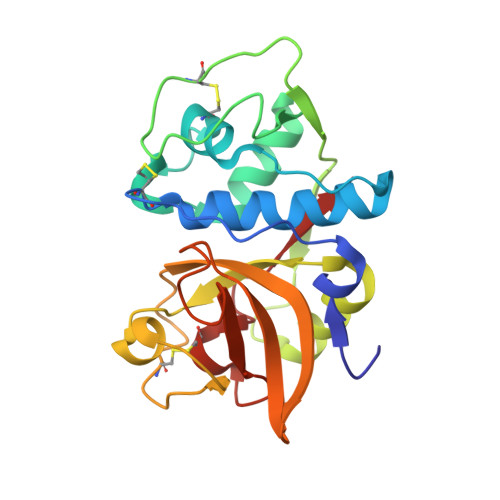Optimisation of 2-cyano-pyrimidine inhibitors of cathepsin K: improving selectivity over hERG.
Rankovic, Z., Cai, J., Kerr, J., Fradera, X., Robinson, J., Mistry, A., Finlay, W., McGarry, G., Andrews, F., Caulfield, W., Cumming, I., Dempster, M., Waller, J., Arbuckle, W., Anderson, M., Martin, I., Mitchell, A., Long, C., Baugh, M., Westwood, P., Kinghorn, E., Jones, P., Uitdehaag, J.C., van Zeeland, M., Potin, D., Saniere, L., Fouquet, A., Chevallier, F., Deronzier, H., Dorleans, C., Nicolai, E.(2010) Bioorg Med Chem Lett 20: 6237-6241
- PubMed: 20843687
- DOI: https://doi.org/10.1016/j.bmcl.2010.08.101
- Primary Citation of Related Structures:
3O0U, 3O1G - PubMed Abstract:
Several structure-guided optimisation strategies were explored in order to improve the hERG selectivity profile of cathepsin K inhibitor 1, whilst maintaining its otherwise excellent in vitro and in vivo profile. Ultimately, attenuation of clogP and pK(a) properties proved a successful approach and led to the discovery of a potent analogue 23, which, in addition to the desired selectivity over hERG (>1000-fold), displayed a highly attractive overall profile.
Organizational Affiliation:
Merck Research Laboratories, MSD, Newhouse, Lanarkshire, ML1 5SH Scotland, United Kingdom. zoran.rankovic@merck.com
















